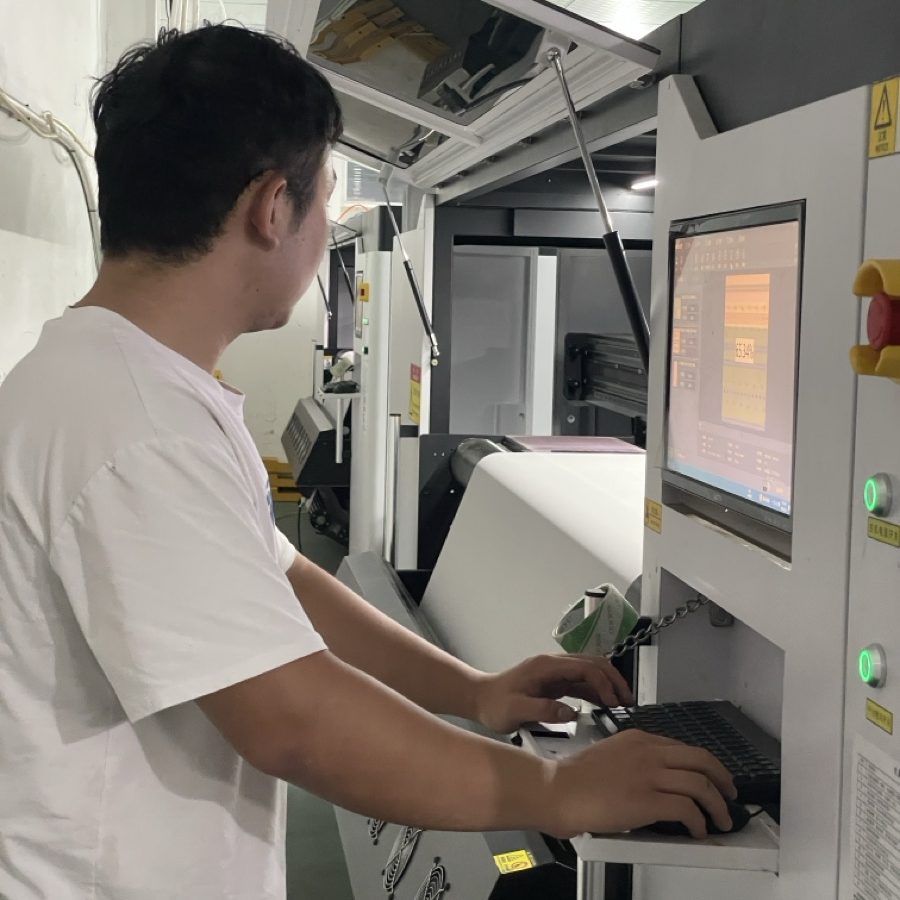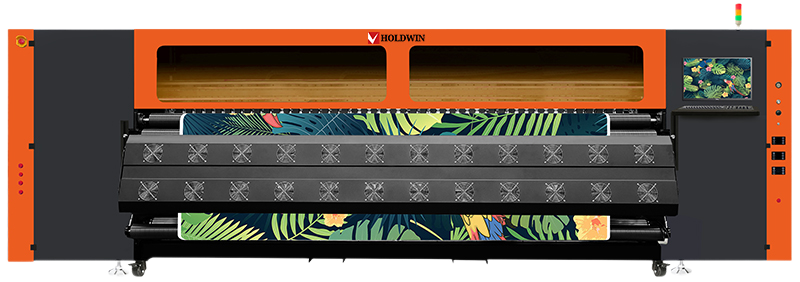
As digital printing technology continues to evolve, one of the most significant advancements has been the introduction of white ink. White ink technology has become a game-changer in the digital textile printing industry, offering unique solutions for printing on dark or transparent fabrics and expanding creative possibilities. This article explores the application of white ink technology in digital textile printing, its benefits, and its impact on the industry. Additionally, it highlights how HOLDWIN, with its innovative solutions, is helping manufacturers embrace this cutting-edge technology to stay competitive in the global market.
White ink, specifically formulated for digital textile printing, is a highly opaque ink used to achieve high-quality prints on dark, colored, or transparent fabrics. The ink’s opacity allows it to act as a base layer, enabling vibrant and clear prints on materials that would otherwise absorb or distort the colors of traditional inks. White ink is used in various digital printing methods, including direct-to-garment (DTG) printing, sublimation printing, and UV printing, each tailored to different textile materials and applications.
The composition of white ink is critical to its success. It often contains titanium dioxide, which contributes to its opacity and brightness. The ink is designed to work seamlessly with digital printers, ensuring smooth application and consistent results. One of the challenges with white ink is its tendency to clog print heads, so regular maintenance and proper printer calibration are essential for optimal performance.
One of the primary applications of white ink in textile printing is printing on dark fabrics. Traditional ink struggles to produce vibrant colors on dark materials, as the base fabric absorbs the colors. White ink solves this problem by acting as a base layer, allowing vibrant colors to be printed on top of it. This opens up new possibilities for designers, as they can now print intricate designs and photographic images on a wide range of dark-colored textiles, including black, navy, and other deep hues.
White ink also plays a crucial role in printing on transparent or semi-transparent materials such as chiffon, mesh, and organza. These fabrics are often used in fashion and interior design for their light, airy qualities. White ink can be used as a base to ensure that prints appear vivid and clear, even on these delicate and see-through materials. This technology is particularly useful in creating custom designs for fashion designers looking to innovate with new materials.
Another key benefit of white ink is its ability to enhance the durability of prints. The ink forms a protective layer over the design, helping to resist fading and wear, even after multiple washes. This makes it an ideal choice for printing on garments and textiles that are exposed to heavy use, such as sportswear, uniforms, and home textiles. As consumers demand longer-lasting and more vibrant prints, white ink technology helps fulfill these expectations.
While white ink technology offers numerous benefits, it also presents some technical challenges. One of the most significant issues is clogging of the print head, as white ink contains pigments that can settle and solidify over time. To mitigate this problem, regular maintenance and cleaning procedures must be followed. It is also essential to use high-quality white ink specifically formulated for digital textile printers to minimize clogging risks.
Another challenge is achieving consistent opacity and color accuracy. White ink requires careful calibration to ensure that the layer is applied evenly and does not affect the color quality of subsequent layers. Printer operators must be trained to adjust the print settings to achieve optimal results. At HOLDWIN, we provide comprehensive technical training and support to ensure that customers can fully leverage white ink technology in their digital textile printing operations.

At HOLDWIN, we are committed to pushing the boundaries of digital printing technology. Our innovative digital printers, such as the latest direct-to-garment (DTG) printers, are specifically designed to work seamlessly with white ink, ensuring superior performance and high-quality prints. We continuously develop and integrate new solutions, allowing our customers to take full advantage of white ink technology in their operations.
We also understand that every textile manufacturer has unique needs, and we offer personalized technical solutions to help our clients overcome challenges and optimize their printing processes. Whether it’s training operators or providing tailored ink formulations, HOLDWIN is dedicated to helping businesses enhance their digital textile printing capabilities.
“After incorporating HOLDWIN’s DTG printer with white ink technology, our ability to print vibrant designs on dark fabrics has completely transformed our business. The colors are sharper, and the prints are incredibly durable, even after repeated washes. The support from HOLDWIN has been invaluable, especially with their personalized training and guidance. We’ve seen a significant increase in customer satisfaction and orders!”
As digital textile printing technology evolves, we can expect further advancements in white ink technology. Researchers are exploring new formulations that will improve the opacity and smoothness of the ink, reducing the potential for clogging and enhancing the color vibrancy. Additionally, innovations in print head technology and ink delivery systems will make it easier to work with white ink, increasing the efficiency and versatility of digital printers.
Another exciting development is the growing demand for eco-friendly inks. As sustainability becomes a top priority in the textile industry, manufacturers are looking for ways to reduce the environmental impact of their production processes. The future of white ink technology may involve the use of water-based, non-toxic inks, further contributing to eco-conscious manufacturing practices.

White ink technology has revolutionized digital textile printing by enabling high-quality prints on dark and transparent fabrics, offering durability and vibrant colors. Although there are challenges associated with this technology, they can be mitigated with proper maintenance and training. HOLDWIN is at the forefront of this innovation, providing cutting-edge digital printing solutions that help businesses stay competitive in the fast-evolving textile market.
As the industry continues to embrace new trends and technologies, white ink will remain a crucial component of digital textile printing. With HOLDWIN’s expertise and commitment to innovation, textile manufacturers can fully leverage this technology to create stunning, long-lasting designs that meet the demands of modern consumers.

Zhiyu is passionate about good products, good services, and good prices to let consumers know that choosing us is the right choice! For partners and end customers, we will provide one-on-one considerate smart services and provide you with more high-quality procurement solutions.